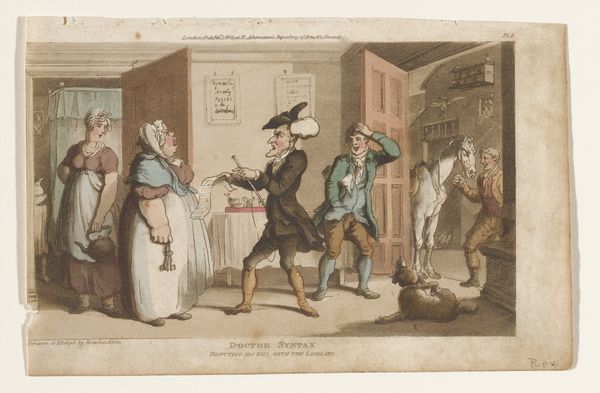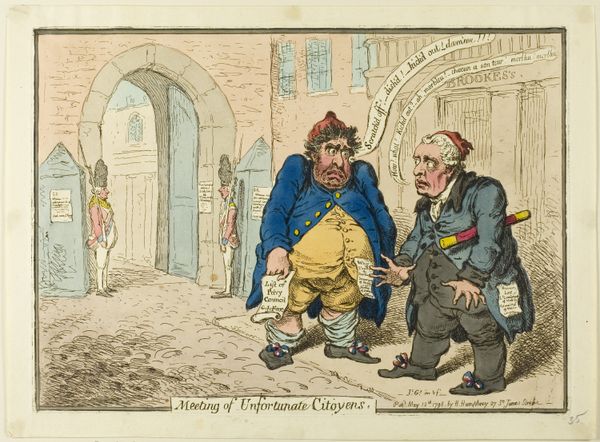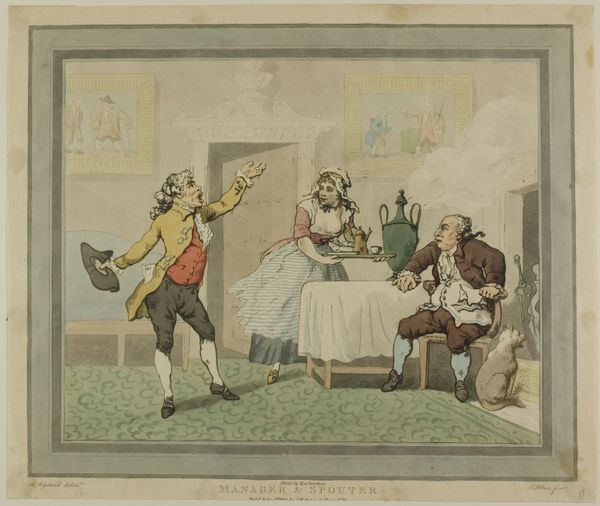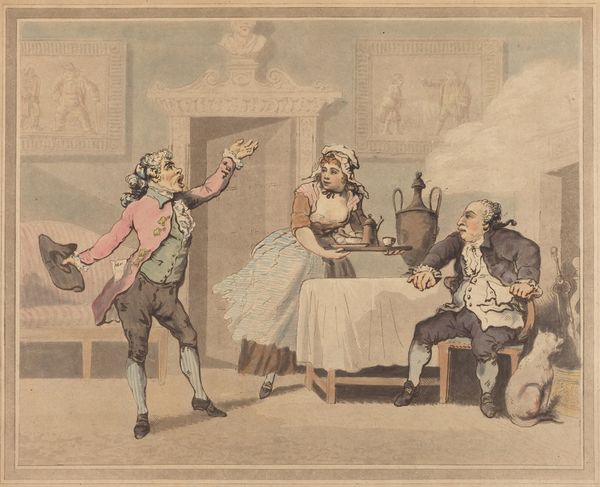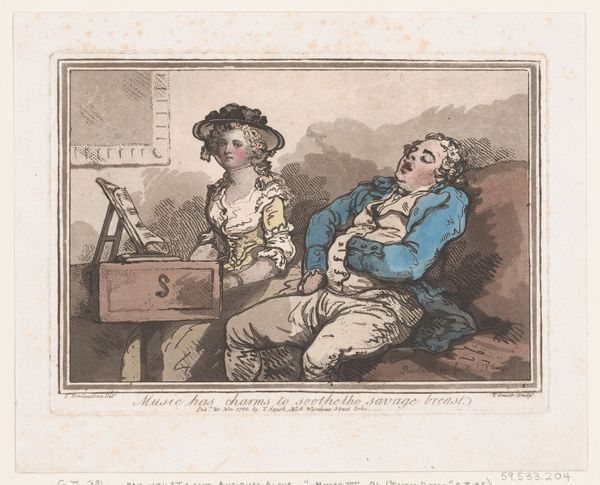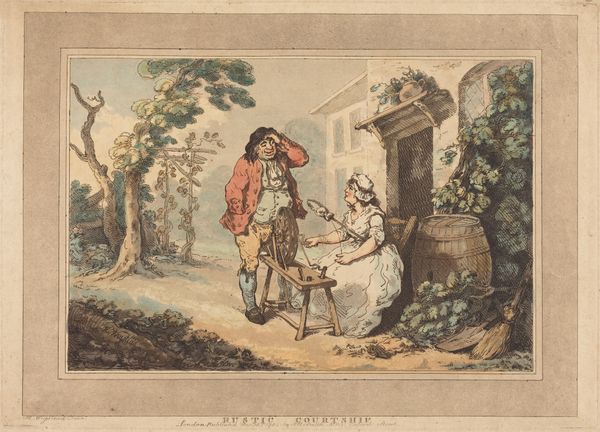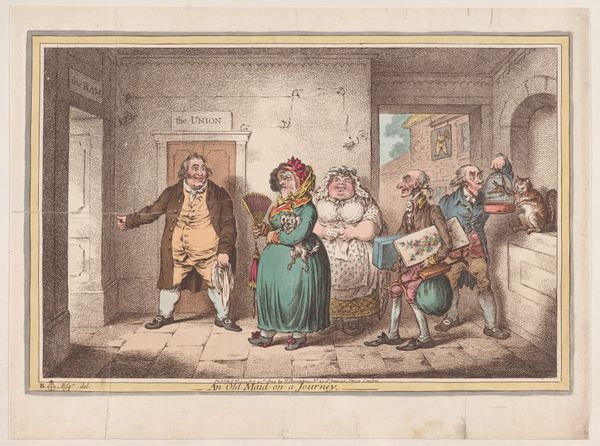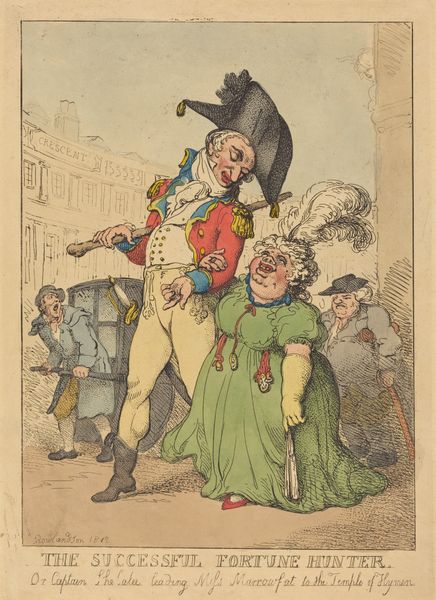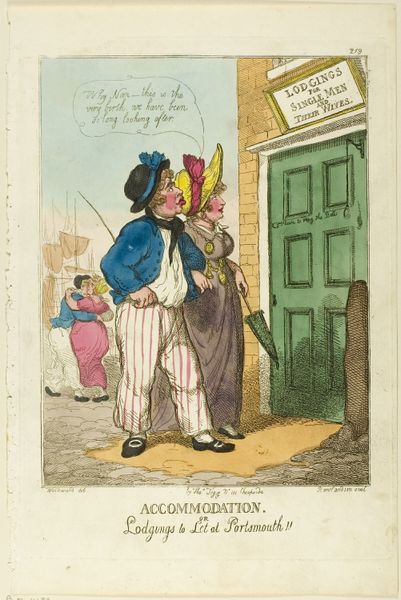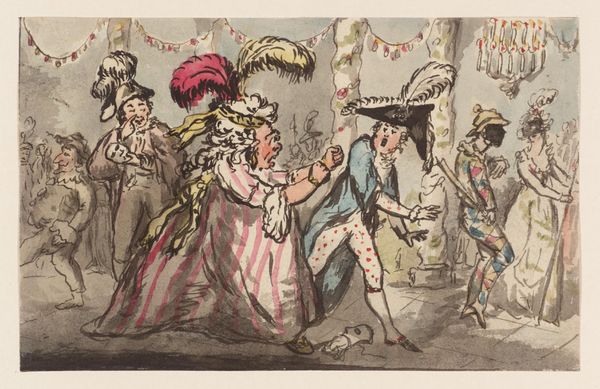
Copyright: National Gallery of Art: CC0 1.0
Editor: We're looking at "A Cully Pillaged" by Thomas Rowlandson, circa 1784-1785, a print with watercolor. There's something almost theatrical about it, with its heightened colors and the very staged composition. What do you make of it, in terms of its visual elements? Curator: Precisely. Note how Rowlandson orchestrates the scene through line and color. The angularity of the lines lends a sense of frantic energy, amplified by the high-keyed palette. The composition guides the eye through a sequence of gestures: the aggressor’s grasp, the victim’s contorted posture, the woman's averted gaze. The diagonal thrust of the figures is countered by the static geometry of the room itself. It almost speaks to a struggle between raw expression and ordered reason. Would you agree? Editor: I do see that interplay between order and chaos. The man's vibrant pink trousers are visually striking amidst the other, more muted, colours. What significance would you ascribe to this formal contrast? Curator: Indeed. It may serve as a focal point, underscoring his vitality, or perhaps even the disruption he represents within this supposedly domestic setting. Semiotically, colors were not chosen at random; each one carries its own connotation. However, such interpretations must be rigorously tested against visual evidence within the work itself, to maintain validity. Does it shift how you engage with this piece? Editor: It makes me look much closer, and question the artist's intention at every step. It goes beyond just what’s happening in the image. Curator: Excellent. Now, consider how the relationship between line and form informs the viewer's subjective interpretation. This awareness becomes a critical tool when appreciating a work, like this one. Editor: Absolutely. Thinking about it formally really enriches the viewing experience.
Comments
No comments
Be the first to comment and join the conversation on the ultimate creative platform.
